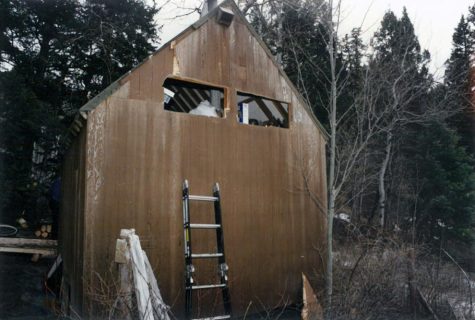
Twitter: @eLeong21

December 1, 2022
There have been cases where a criminal can evade the authorities for many years. As they adapt, they become increasingly notorious in the public’s view for their tactics that stun forensic scientists.
“Criminals are adapting all the time. For example, if you look at the narcotics world the chemists that are out there are always reformulating the different drugs. But as we get more cases with these new narcotics, we can start developing better ways to identify it, closing the gap between us for the time being,” Anzalone said.
In the past, scientists gathered evidence in manners that were befitting the period. Often samples were contaminated because the first responders were unaware of contamination or the use of samples for DNA as they had not been discovered. However, as science develops, forensic scientists can revisit cases left unsolved with new techniques, technology, and ideas to discern a culprit or prosecute a perpetrator.
An example was the arrest of the Golden State Killer. A serial killer, rapist, and burglar that had terrorized the bay area from 1974 to 1986. In the specific case of the killer, Joseph James DeAngelo, the killer had served as a police officer who had access to evidence and could easily tamper with the chain of custody or integrity of evidence.
However, with the recent introduction of DNA in forensic science in the past two decades, the case, which had been left “cold” or unsolved for decades, was revisited as evidence and analyzed for samples of DNA.
According to the Orange County District Attorney’s office. DeAngelo was, “identified through Investigative Genetic Genealogy (IGG) in 2018, more than three decades after he raped and murdered his last victim in 1986.”
IGG is the process of matching a DNA sample of a perpetrator to a known relative through the Combined DNA Index System or CODIS. DeAngelo was identified by matching a sample of his DNA to the DNA of a relative nearby and through the process of elimination along his family tree, was eventually arrested and prosecuted.
DeAngelo is now serving a life sentence without chance of parole for 13 counts of first-degree murder, and another 13 counts of kidnapping to commit robbery. Another eight years were added for illegally modifying a weapon according to the Orange County District Attorney’s office.
The case itself would have been left unsolved if not for the efforts of the late local author, Michelle McNamara, who brought the issue to light in her best-selling book, “I’ll be Gone in the Dark” detailing her search for DeAngelo until her death in 2016.
Not only does forensic science assist local cases, but also national ones.
A man that baffled the Federal Bureau of Investigation (FBI) and the American public was Ted Kaczynski. Nicknamed the Unabomber, Kaczynski mailed bombs for 20 years to selected victims while living alone in the woods of Montana. Through his bombings, he was able to kill three people and injure 23 others while inciting national fear over what he could bomb next.
According to the FBI, Kaczynski was a genius that sidestepped a full-time team of 150 investigators and forensic scientists. They attempted to find any possible piece of forensic evidence that scientists could use against Kaczynski. Still, they came up short because he made the bombs himself and did everything possible to prevent the forensic scientists from giving clues.
“It’s quite interesting that they were able to track a guy whose main communication with the world was quite untraceable, so to speak because he mainly sent explosives and other incendiaries to various educational institutions and instead of something like leaving notes,” said junior Pranav Kamat.

In 1995, the FBI gained a big clue as Kaczynski published his manifesto ‘Industrial Society and its Future.’ Kaczynski’s brother, David, identified that the writing was similar to Ted’s. Linguistic analysts were then able to locate Kaczynski and arrest him by tying the manifesto to letters Kaczynski had previously written to his brother David, allowing them to gain a search warrant on the house.
“I think the fact that they could track him through [linguistics] is quite amazing. That really is a testament to how informative and helpful forensic sciences are in a world where it’s becoming increasingly hard to keep track of things,” Kamat said.
The one constant between the two cases was forensic science. A law enforcement agency’s size, scale, or funding eventually must rely on its scientists to allow them to carry out their arrests. Students such as Kamat, who read about famous cases, are interested in the sciences centered around forensic science.
“I feel like it’s really interesting how they take biology and chemistry and apply it to something that could possibly bring justice to a case. Because I take a little bit of interest in biology and chemistry myself, I find it pretty interesting how they apply the methods which they use, and you know, just the overall for lack of better word, ingenuity,” Kamat said.

